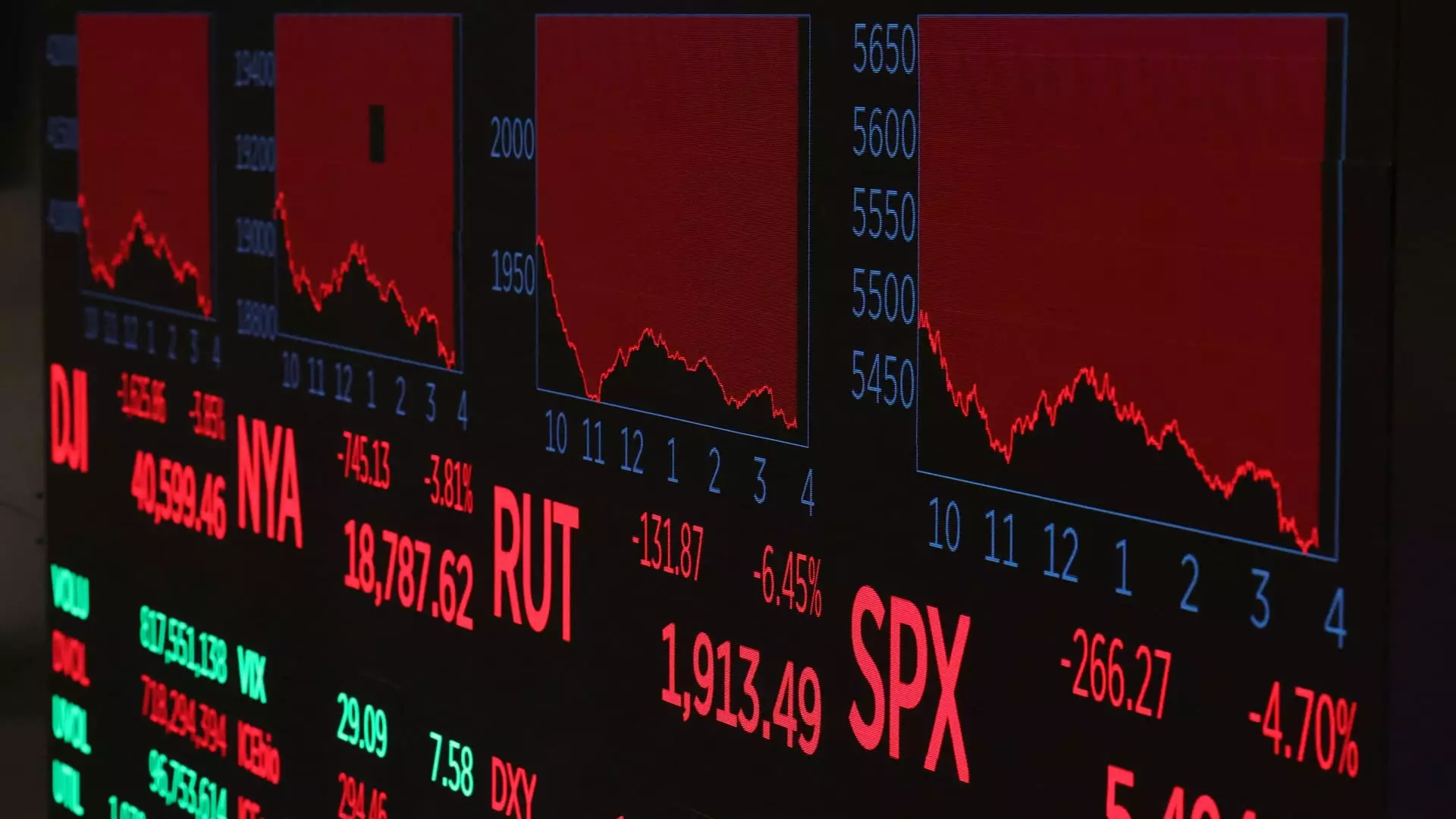In recent weeks, a palpable tension has gripped Wall Street, primarily fueled by President Donald Trump’s zigzagging tariff policy. The financial sanctum found itself on the precipice of unease, oscillating between fears of recession and the warm embrace of bullish sentiment. It’s under these tumultuous circumstances that a newfound breed of investor has emerged—a cohort of everyday individuals willing to navigate the choppy waters of the market. They are driven not solely by hope, but by an understanding that downturns can serve as opportunities; when established norms falter, fresh perspectives often come to light.
Rachel Hazit, a marketer from Philadelphia, epitomizes this emerging retail investor ethos. Her perspective on the market is refreshingly optimistic, viewing declines as mere “sales” rather than dire warnings. However, therein lies an essential point of critique: such a mindset risks oversimplifying the complexities that accompany stock market fluctuations. Buying into economic downturns without a comprehensive understanding of the underlying factors can lead to missteps that may resonate well beyond the individual level, potentially impacting a broader economic landscape.
The Psychology of ‘Buying the Dip’
The mantra of “buying the dip” has gained traction among many retail traders, leading to a deluge of capital flowing back into the market despite ominous signs. This phrase, coined as a strategy aimed at purchasing stocks at reduced prices, reflects not just tactical foresight but also a psychological battle against fear. With daily net inflows reaching staggering numbers—upwards of $8.8 billion over a recent stretch—it’s clear that retail investor confidence isn’t quaking in the face of volatility.
Yet, market dynamics are not as straightforward as they may appear. The influx of smaller investors buying during downturns presents a sharp contrast to institutional behavior, which has often leaned toward caution amid uncertainty. Marco Iachini of Vanda Research notes that retail investors are not capitulating, indicating a bullish sentiment even when the bears appear to dominate the landscape. While this tenacity is commendable, it raises questions about the sustainability of these investment strategies and how retail investors perceive risk in an increasingly volatile market.
Risk and Reward in the Broader Picture
While opting to invest during market dips can yield substantial returns, the inherent risks cannot be dismissed. The VIX, or the volatility index, which serves as a sentinel for market fears, has reached heights not seen since early 2020, signifying an undercurrent of concern amid the retail investors’ fervor. For every Hazit, there are many who are grappling with their fears—concerns about tariffs affecting their purchasing power loom large.
Furthermore, the retail investor’s rush to acquire equities, particularly through exchange-traded funds (ETFs) like Vanguard’s VOO, could suggest an evolving mentality that values longevity and stability over quick gains. This may indicate a broader trend of retail investors shifting from short-term speculation to long-term investment, driven by data and analytics rather than merely emotion-driven decisions. However, this passive approach might make them more susceptible when the overall market sentiment flips.
A Dissonance of Sentiment and Reality
The followers and influencers—pushing the narrative that “millionaires are made during market downturns”—fail to address the broader repercussions of unfettered investment enthusiasm. This notion can incite a disconnect between perceived opportunity and economic reality. Hazit herself acknowledges her discomfort with the overall economic climate, understanding that her decisions to buy stocks could have long-term implications beyond immediate gains. It’s a somber reminder that while individual fortunes might be crafted, they are still tethered to the collective economic health.
Some retail investors are confronted with the harsh reality of their financial commitments, emphasizing that financial prudence remains necessary even amidst the promise of market rebounds. Acknowledging the nature of economic cycles, where downturns often precede recoveries, is essential. Failure to do so invites risk that could unravel the fabric of retail investor gains and confidence.
The Future Landscape: A Call for Informed Investing
As retail investors continue to make waves in the stock market, it is imperative that they temper their enthusiasm with caution. While the impulse to invest in a declining market can yield gratifying reward, it also carries significant risk. The dance between fear and opportunity is precarious, and if the recent trends of capital inflow are indeed a harbinger of a longer-term strategy, then a thorough understanding of market behaviors is critical.
Ultimately, the lessons learned during this period should resonate far beyond their immediate implications. They urge a reevaluation of investment strategies among retail traders and a renewed focus on educating oneself about market conditions, risk assessment, and the cyclical nature of economies. Embracing these insights could empower the retail investor not just to weather the storms to come, but to thrive amid turbulence, turning challenges into avenues for astute financial growth.


Leave a Reply